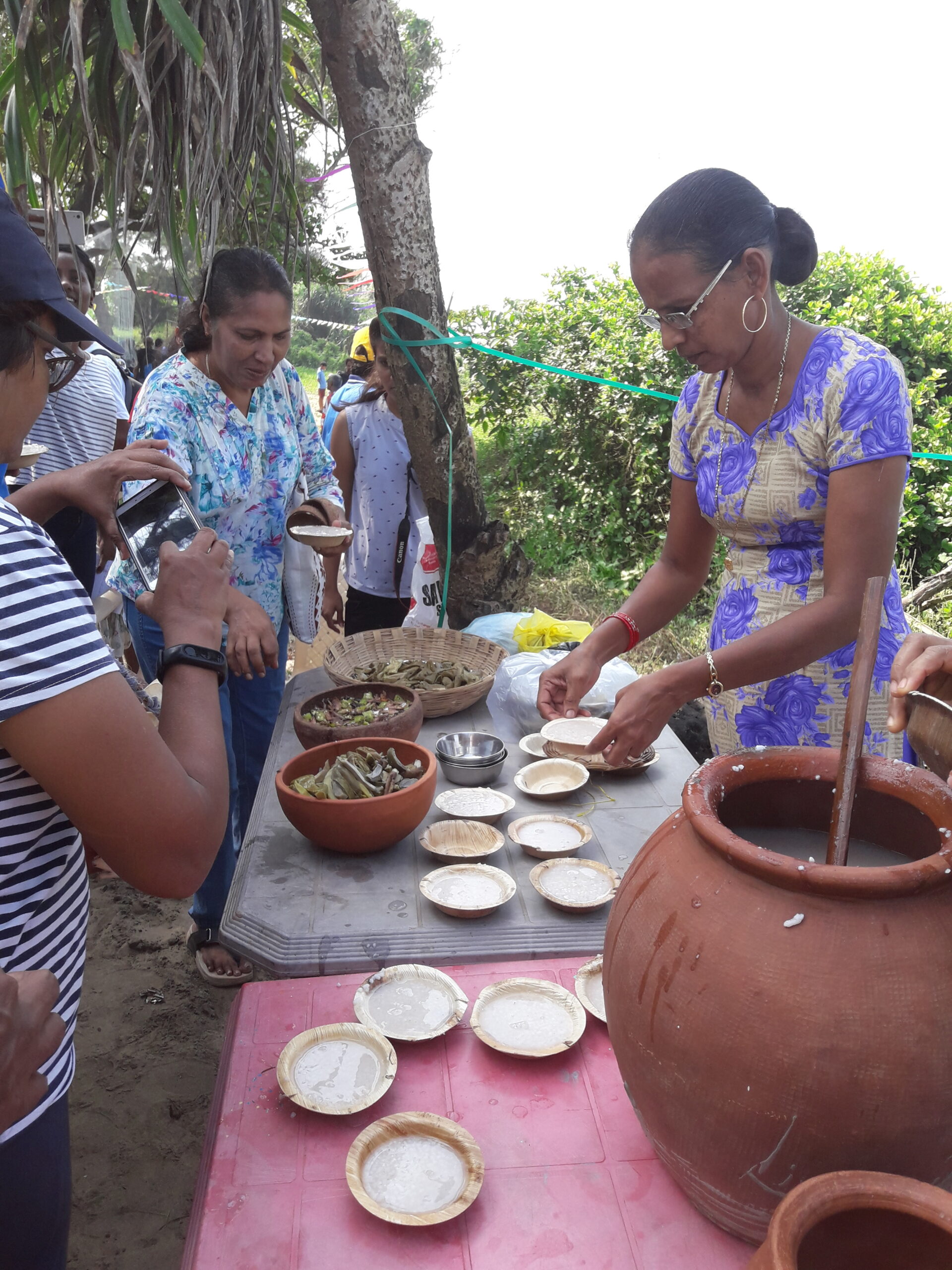‘Pez’ or ‘Conjee’ is a simple yet nutritious comfort food which Goans cannot do without. Similar to a rice gruel, ‘Pez’ or ‘Conjee’ is made from Goan ‘boiled’ or ‘red rice’ that is native to the Konkan Coastal region, making this ‘Pez’ tasty and special. Not only is Pez flavourful but nutritious and healthy. What’s interesting is this gruel must be had with accompaniments to enjoy it to the fullest.
‘Pez’ even more special with accompaniments
Besides eating it as a mid-day or pre-dinner meal, in Goa, ‘Pez’ is administered to the sick and convalescing. The speciality of ‘Pez’ lies in its nutrition. But the thing that makes ‘Pez’ extraordinary are the tasty accompaniments that go with it. Some are to die for!

Accompaniments
‘Chepni’ (baby mangoes pickled in brine) is the favourite. A bite of mango with a spoonful of ‘Pez’ and who could resist that? The next best accompaniment is ‘Kharyacho’ (salt fish, usually mackerel, either roasted over a wood fire or fried in coconut oil and shredded). You have to taste it to believe it. Then the tasty ‘miscut’, (diced, raw mango coated with oil-spluttered mustard seeds, turmeric powder, chilly powder and powdered sea salt). Not forgetting the very famous ‘kaal-chi-Kodi’, (literally meaning ‘yesterday’s curry’ – a leftover coconut gravy, pan-fried to a thick pasty consistency). All to die for!

Preparation is easy
Preparing the ‘Pez’ is easy. All one needs to do is take a portion of rice, place in an earthen pot, add some sea-salt (Goan sea-salt is tastier), four times the quantity of water and boil for around 30 minutes on a wood fire till the grains are soft and supple and the aroma of the rice permeates the air. The ‘Pez’ is ready to eat! Of course! the accompaniments are a necessity.
Paddy is boiled and dried
The paddy (rice grain with the husk) needs to be processed before it reaches the market. After harvesting, paddy is dried in moderate to warm sunshine for a few days. (If in Goa during harvest, be sure to notice village street-sides covered with paddy for drying). Some prefer par-boiling the paddy and then drying. Once the husk is dry, the paddy is stored in makeshift bamboo mat silos called ‘bhataso kodo’. These silos would be coated with cow-dung and dried to make them waterproof and insect proof. (Nowadays farmers use plastic sacks instead as they are easily available and durable). If parboiled the grain needs to be dried again before consumption. The rice is boiled in huge copper pots over a wood fire.
The usefulness of ‘Pez’
Usually, had during summer for its cooling properties, many Goans have it as a mid-day meal (at around 11 am). It is also had as a pre-dinner filler after the Angelus Prayer at around 7 pm. My grandmother gave us ‘Pez’ whenever we fell ill and had no appetite. It was a safe and healthy convalescing food supplement eaten fresh and hot. Not only did it strengthen us but also gave us back our appetite.
Goans carry their traditions everywhere
Goans are known to carry their traditions wherever they go especially when it comes to their food. From Pez with ‘Kaal-chi-Kodi’ (a previous day’s left-over coconut based curry, evaporated over the fire till it turns thick) to ‘tonak’ (an authentic Goan preparation of home-grown blackeyed beans and potatoes) or some salt fish ‘parra’ etc. and ‘pao’, (small rounded loaves of bread baked and sold by village bakers door-to-door).


